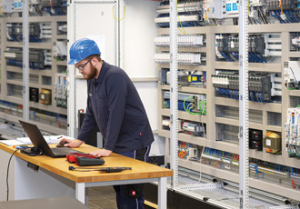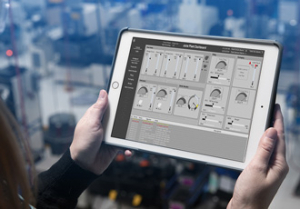F1 Limitation on Use of CFD Software Could Benefit More Productive Software Providers
9th February 2008
Source:
Flomerics

Flomerics has reacted to the Federation Internationale de l’Automobile’s (FIA’s) recent announcement of restrictions on the use of computational fluid dynamics (CFD) analysis software by suggesting that these restrictions might actually increase the use of more efficient CFD tools that automate most of the modeling process. “We believe that the FIA’s limitation on CFD and wind tunnel testing will accelerate the trend towards use of CFD tools that accomplish more in less time by integrating simulation with the design process,” said John Parry, Research Manager for Flomerics.
CFD is used by nearly every Formula One racing team to optimize the aerodynamics of vehicle bodies and design other parts where fluid flow or heat transfer is critical. The FIA is concerned that better-financed teams have an unfair advantage through their ability to utilize CFD along with wind-tunnel testing to tune vehicle aerodynamics to ever-higher levels. The new restrictions will limit the number of people involved in CFD analysis and the hardware performance of CFD computer systems.
“We understand and accept the FIA’s reason for restricting wind tunnel testing since its high cost acts as a barrier to smaller teams,” Parry said. “The FIA also decided to restrict CFD since it was concerned that resources would simply be shifted from wind tunnel testing to CFD if it did not act. This is unfortunate since high-profile applications such as Formula One racing have helped to drive the development of CFD and provide wider benefits. For example, CFD has had a major positive impact on the environment through its use to improve aerodynamics, fuel efficiency and hydrocarbon emissions in mass market automobiles.”
“The restriction on the use of CFD acknowledges both the power of CFD and the fact that it has become widely accepted as an essential design tool,” Parry continued. “Since the restriction is on the number of people involved in CFD, teams should respond by making sure the people that are still allowed to work in CFD are operating at the highest possible levels of productivity. This can be achieved with CAD-embedded CFD software, such as our EFD suite, in which the geometry never leaves the CAD system so the design can quickly be changed and re-analyzed. Creating the computational mesh also requires no manual intervention – this is a time-consuming, tedious and error-prone job in traditional CFD software.”
“CAD-embedded CFD may not replace the existing software for full-car aerodynamics simulations requiring massive parallel computing,” Parry concluded. “But it will provide major productivity improvements in optimizing the design of components such as wing mirrors, wings, spoilers, suspension struts, intake and exhaust systems, clutch, brake and fuel distribution systems. As a result of these restrictions, perhaps F1 will now drive the development of CAD-embedded CFD software as it has traditional CFD in the past.”
“We understand and accept the FIA’s reason for restricting wind tunnel testing since its high cost acts as a barrier to smaller teams,” Parry said. “The FIA also decided to restrict CFD since it was concerned that resources would simply be shifted from wind tunnel testing to CFD if it did not act. This is unfortunate since high-profile applications such as Formula One racing have helped to drive the development of CFD and provide wider benefits. For example, CFD has had a major positive impact on the environment through its use to improve aerodynamics, fuel efficiency and hydrocarbon emissions in mass market automobiles.”
“The restriction on the use of CFD acknowledges both the power of CFD and the fact that it has become widely accepted as an essential design tool,” Parry continued. “Since the restriction is on the number of people involved in CFD, teams should respond by making sure the people that are still allowed to work in CFD are operating at the highest possible levels of productivity. This can be achieved with CAD-embedded CFD software, such as our EFD suite, in which the geometry never leaves the CAD system so the design can quickly be changed and re-analyzed. Creating the computational mesh also requires no manual intervention – this is a time-consuming, tedious and error-prone job in traditional CFD software.”
“CAD-embedded CFD may not replace the existing software for full-car aerodynamics simulations requiring massive parallel computing,” Parry concluded. “But it will provide major productivity improvements in optimizing the design of components such as wing mirrors, wings, spoilers, suspension struts, intake and exhaust systems, clutch, brake and fuel distribution systems. As a result of these restrictions, perhaps F1 will now drive the development of CAD-embedded CFD software as it has traditional CFD in the past.”
Similar articles
More from Flomerics
- Laser Design Offers SLP-500 High-Speed Laser Probe 14th May 2009
- Simulation Helps Develop Spray Gun with 50% Larger Pattern in Significantly Less Time 30th April 2009
- Giles Gaskell Joins Laser Design & GKS Inspection Services Team 17th March 2009
- Embedded CFD Helps Reduce Number of Thermal Prototypes from Up to 12 to 1 4th March 2009




 technology at Jacobs Vehicle Systems.JPG)







Write a comment
No comments